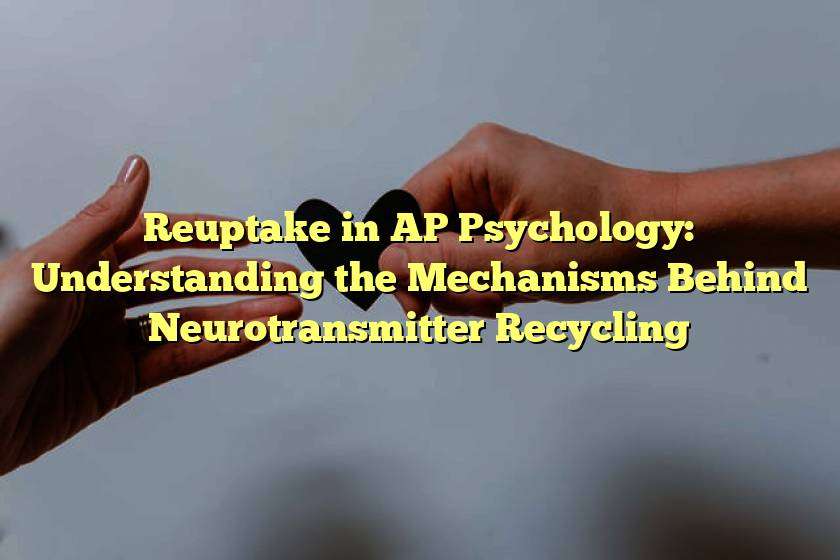If you are studying AP Psychology, you have likely encountered the term "reuptake" in your lessons about how neurotransmitters work in the brain. Reuptake is a crucial process by which the brain regulates the amount of neurotransmitters it uses to communicate between neurons. In this article, we will delve into the details of how reuptake works, its importance in brain function, and the implications of its dysfunction.
What is Reuptake?
Reuptake is the process by which neurotransmitters that have been released into the synaptic cleft (the space between two neurons) are taken back up by the presynaptic neuron. This mechanism is essential for regulating the amount of neurotransmitters in the synaptic cleft, which affects the strength and duration of the signal between neurons.
During neurotransmitter release, often triggered by an action potential in the presynaptic neuron, the neurotransmitter is released from the presynaptic terminal and diffuses across the synaptic cleft to bind to receptors on the postsynaptic neuron. Some of the neurotransmitters that are not bound to receptors are taken up by the presynaptic neuron via reuptake.
The reuptake process occurs through specialized transporter proteins located on the membrane of the presynaptic neuron. These transporter proteins recognize specific neurotransmitters and transport them back into the neuron for recycling. Once inside the neuron, the neurotransmitter can be either degraded by enzymes or repackaged into vesicles for later release.
The Importance of Reuptake
Reuptake is a crucial mechanism for maintaining the balance of neurotransmitters in the brain. It allows the brain to modulate the strength and duration of signals between neurons, which is essential for proper brain function.
If reuptake is disrupted, it can result in an imbalanced amount of neurotransmitters in the synaptic cleft. This imbalance can lead to a variety of neurological disorders, including depression, anxiety, and attention deficit hyperactivity disorder (ADHD).
For example, selective serotonin reuptake inhibitors (SSRIs) are a class of antidepressant medications that work by blocking the reuptake of serotonin in the brain. This leads to an increase in the amount of serotonin in the synaptic cleft, which can improve mood and reduce symptoms of depression.
Dysfunctions in Reuptake
Dysfunctions in the reuptake process can lead to a variety of neurological disorders. As mentioned earlier, disruptions in serotonin reuptake are linked to depression. Similarly, disruptions in dopamine reuptake are linked to ADHD and addiction.
In ADHD, for example, it is believed that the brain has difficulty regulating dopamine levels due to a dysfunction in dopamine transporter proteins. This results in an imbalanced amount of dopamine in the synaptic cleft, leading to symptoms of hyperactivity and impulsivity.
In addiction, drugs of abuse can interfere with the normal reuptake process, leading to an overabundance of neurotransmitters like dopamine in the synaptic cleft. This can result in a feeling of euphoria and may contribute to the persistent use and abuse of drugs.
Conclusion
Reuptake is a fundamental process in the brain that regulates the amount of neurotransmitters used for communication between neurons. Dysfunctions in this process can lead to a variety of neurological disorders, including depression, anxiety, ADHD, and addiction. Understanding the mechanisms behind reuptake is essential for gaining insight into the workings of the brain and developing effective treatments for neurological disorders.



